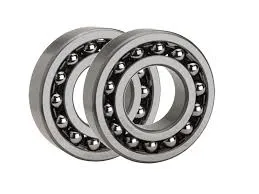
Nov . 18, 2024 09:46 Back to list
Understanding the Features and Applications of 23332 Bearings in Modern Machinery
Understanding the 23332 Bearing A Comprehensive Overview
Bearings are essential components in various machinery, enabling smooth rotational or linear movement by reducing friction between moving parts. Among the myriad of bearing types, the 23332 bearing stands out for its specific applications and unique features. In this article, we will explore the design, applications, and advantages of the 23332 bearing, providing insights that can assist engineers and technicians in making informed choices for their projects.
Design and Specifications
The 23332 bearing is part of a family of spherical roller bearings, which are known for their adaptability to misalignment between the shaft and the housing. The designation 23332 typically indicates a specific size and design configuration, characterized by a series of rollers that are housed within an inner and outer ring. These roller elements facilitate the translation of loads and ensure smooth operation under various working conditions.
A significant feature of the 23332 bearing is its ability to accommodate both radial and axial loads, making it a versatile choice for applications where both types of stress are present. The bearing's spherical design allows for a certain degree of angular misalignment, which is particularly advantageous in applications subject to vibration or misalignment due to thermal expansion.
Applications
The 23332 bearing finds applications in a multitude of industries, including mining, construction, and agricultural machinery. Its robustness and ability to handle heavy loads make it ideal for use in
1. Heavy Machinery Equipment like excavators, bulldozers, and cranes often require bearings that can withstand extreme conditions. The 23332 bearing is well-suited for such applications due to its durability.
2. Wind Turbines In renewable energy sectors, wind turbines rely on bearings that can handle dynamic loads and high rotational speeds. The 23332 bearing’s design helps to maximize efficiency and minimize downtime.
23332 bearing

3. Conveyor Systems Industries that rely on conveyor systems for material handling benefit from the 23332 bearing's ability to maintain functionality under heavy loads and constant use.
4. Agricultural Equipment Tractors and other farming machinery utilize the 23332 bearing due to its capacity to handle rigorous operations while maintaining reliability and performance.
Advantages of the 23332 Bearing
One of the primary advantages of the 23332 bearing is its ability to improve machinery efficiency. By reducing friction, these bearings facilitate smoother movement, leading to less energy consumption and decreased wear on components. This efficiency translates to lower operational costs and extended machinery life, providing significant long-term savings.
Additionally, the 23332 bearing is designed for easy installation and maintenance. Proper lubrication and regular checks can enhance its lifespan, ensuring that machinery operates at peak performance levels. Many manufacturers offer sealed versions of the bearing, which help in providing protection against contaminants such as dust and moisture, further enhancing longevity.
Conclusion
In conclusion, the 23332 bearing is a highly versatile and efficient component that plays a critical role in various industrial applications. Its design facilitates the handling of both radial and axial loads while accommodating misalignment—features that are essential for machinery operating under challenging conditions. By investing in quality bearings like the 23332 , engineers and technicians can ensure their equipment remains reliable, efficient, and capable of meeting the demands of modern industry.
As industries continue to evolve, so do the designs and technologies associated with bearings. Staying informed about the latest advancements and understanding the specific requirements of different applications will enable professionals to make smarter choices that contribute to the overall success of their operations. The 23332 bearing exemplifies how even a single component can significantly influence the functionality and efficiency of larger systems.
Latest news
-
Grooved Ball Bearing Design and Functionality
NewsJun.04,2025
-
Concrete Mixer Bearing Load Capacity Testing
NewsJun.04,2025
-
6004 Bearing Dimensions in Robotic Joint Designs
NewsJun.04,2025
-
Advantages of Single-Row Deep Groove Ball Bearings
NewsJun.04,2025
-
Applications of Deep Groove Ball Bearings in Automotive Systems
NewsJun.04,2025
-
Innovations in Bearing Pressing Machine Design
NewsJun.04,2025
